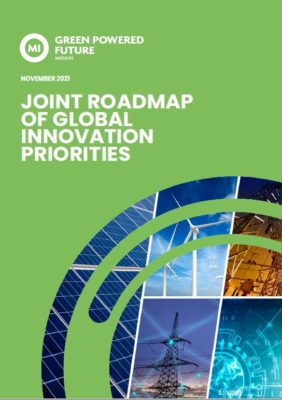
Mission Innovation's Joint Roadmap of Global Innovation Priorities draws a pathway to guide large R&I investment, energy policy and international cooperation towards clean energy transition and identifies the top 100 global innovation priorities to be tackled to accelerate energy system modernisation and decarbonisation.
To achieve global climate goals, emissions from the power sector need to fall dramatically in the next decade. At the same time, power systems worldwide face unprecedented challenges, key among them being the mass-scale integration of variable renewable energies (VRE), deep electrification of end uses, and achieving universal electricity access.
While in many regions VRE are already the lowest cost form of generation, further and bold action is needed to achieve the necessary pace of deployment. The government’s ambition to achieve net zero greenhouse gas emissions by 2050 is a “colossal challenge”. According to IRENA scenarios, renewable energy sources must meet 86% of power demand by 2050 with almost two-thirds generated by VRE, such as wind and solar. Today the current global average VRE share is less than 10%2.
Without a major acceleration in clean energy innovation, this target will not be achievable. However, the intermittent nature of VRE poses significant challenges to power systems to ensure the security and reliability of the energy supply. To maximise the integration of increasingly higher levels of distributed VRE, it is crucial that power systems are operated more flexibly to balance supply and demand while keeping the system costs low. Even though the technologies in use today can allow significant emissions reduction and flexibility, they are insufficient on their own to enable very high shares of VRE while maintaining the energy systems’ security and resiliency.
The year 2021 marks the beginning of a key decade for this endeavour, and the 26th Conference of the Parties (COP26) of the United Nations Framework Convention on Climate Change is a pivotal point in raising the global climate ambitions and actions.
The Green Powered Future Mission, launched within Mission Innovation phase 2, developed this Joint Roadmap of Global Innovation Priorities drawing a pathway to guide large R&I investment, energy policy and international cooperation towards clean energy transition. This Roadmap identifies the top 100 global innovation priorities to be tackled to accelerate energy system modernisation and decarbonisation, spanning three main thematic areas (R&I Pillars):
i) Affordable and reliable VRE, ii) System flexibility and market design, and iii) Data and digitalisation for system integration. Moreover, the ongoing energy transformation and the power systems of the future must be sustainable and fair in a broader sense, thus ensuring that all countries receive the financing and technological knowhow to build their green energy futures.
This Roadmap is global in scope however, since innovative solutions need to be validated and implemented locally, R&I activities will rely on large-scale demonstrations, replicability studies and digital solutions to build a “toolbox” from which countries can pick and customise innovative solutions as appropriate to their own geography, system conditions and national strategies.
Power Mission R&D activities and demonstrators will provide confidence to regulators, innovators and the industry, that the power systems with high shares of VRE can guarantee a secure electricity supply when and where it is needed, by making the right tools and best practices available to all. As a result, the mission will boost the energy system transformation needed to reach global decarbonisation objectives.
It is important to underline that this Roadmap has been developed based on an extensive consultative process involving a broad set of stakeholders including MI member governments, power sector leaders (TSOs, DSOs, RTOs, technology providers, etc.) and international organisations. Finally, we are eager to state that this Roadmap lays the basis for the Power Mission Action Plan 2022 – 2024 which is meant to highlight and explicate the dedicated bold actions of Mission members, leading to full scale demonstrators to validate the proposed innovative solutions.
< Back to all entries
